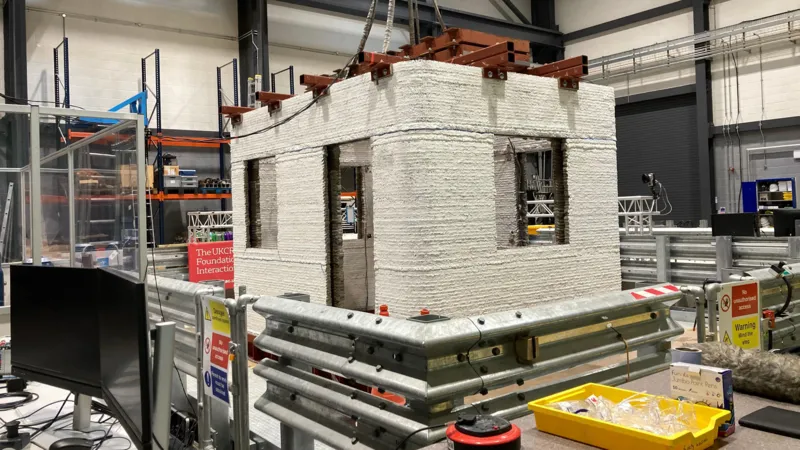University of Bristol researchers are testing 3D-printed structures for earthquake resistance using a specialized shaking table. The experiment, conducted at the university’s Soil Foundation Structure Interaction Laboratory (SoFSI) in Langford, Somerset, examines how these buildings respond to simulated seismic activity. Professors involved have described it as a “world first experiment” aimed at improving safety in earthquake-prone regions.

The simulator can replicate various earthquake conditions by applying horizontal movements and different ground motions. According to David Williams, who manages SoFSI, they can test “anything that we can bolt to the table.” Results will be shared with building designers to enhance structural safety.
3D-printed homes are constructed using robotic arms that build walls layer-by-layer following digital blueprints. “It is deemed to be a very sustainable technology because there is less wasted material and also it is deemed to be flexible and fast,” explained Raffaele De Risi, associate professor of civil engineering. The technology’s speed also contributes to affordability.
Anastasios Sextos, professor of earthquake engineering, emphasized the significance of this research: “Testing a real-scale structure is a dramatic leap forward to see if it can be used in earthquake prone countries.” The project aims to “provide a means to reduce the cost of safety worldwide.”
The research addresses a critical global challenge. “Earthquake safety is a problem that affects millions of people worldwide and many of them don’t have the financial means to protect themselves,” noted Professor Sextos. In a world that is “changing faster than science,” the team is focused on developing solutions that are both effective and accessible.
Source: bbc.com

